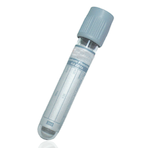Suitable Specimen Types
- Fluoride Oxalate
Specimen Transport
First class postSample Processing in Laboratory
Place sample in toxicology rack.Sample Preparation
None requiredTurnaround Time
3 days.Sample Stability
Keep refrigerated. 4 degrees.Cocaine & Benzoylecgonine
General Information
Cocaine is one of the most potent of the naturally occurring nervous system stimulants. The compound is found in the leaves of Erythroxylon coca, a South American shrub, in amounts of up to 2% by weight. It was first isolated in pure form in 1855, and has been widely utilised in medicine as a local anaesthetic and increasingly by drug abusers for its stimulant properties. When self-administered, it is commonly taken as the hydrochloride by nasal insufflation or intravenous injection or as the free base by smoking, in dose of 10 – 120 mg.
Cocaine is rapidly metabolised in man by the hydrolysis of one or both of the ester linkages. It’s major metabolite, benzoylecgonine (BZE), is believed to arise through both enzymatic and non-enzymatic processes in vivo. Cocaine may be further metabolised to ecgonine, ecgonine methyl ester and norcocaine. Cocaine is eliminated in the urine as unchanged drug (1-9%), BZE (35 – 54%), ecgonine methyl ester (32 – 49%) and ecgonine (not quantified) in a 24 hour period.
Despite overdosage with cocaine resulting in a relatively small number of serious intoxications, especially considering its popularity as a recreational drug, measurement of cocaine is commonly requested in post mortem toxicological investigations. The symptoms of acute toxicity are similar to those for amfetamine, although it is believed that a direct cardiotoxic effect may be a contributory factor in cocaine induced deaths. Myocardial infarction, ventricular tachycardia and fibrillation, cerebrovascular accident, pulmonary dysfunction and hepatotoxicity may occur with acute or chronic abuse.
Please note, this assay is for the quantitative determination of cocaine in blood. Cocaine use may also be detected via our urinary Drugs of Abuse Screen by LC-MS/MS.
Patient Preparation
No patient preperation required.
Notes
Please note that cocaine is known to be unstable in unpreserved blood.
Cocaine measured by LC-MS/MS.
Reference Range
Cocaine: Toxic range: > 0.5 mg/L. (Schulz et al. Critical Care 2012, 16:R136)
Specifications
- EQA Scheme?: Yes
- EQA Status: LGC QUARTZ, LGC CLIN TOX
